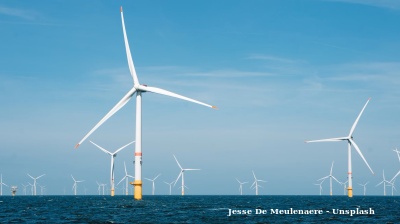Energy ravenous AI data centres are set to become a major source of greenhouse gas (GHG) emissions by 2030 as the number of server farms needed to run the artificial intelligence services is set to expand exponentially over the next two and half decades, according to Morgan Stanley.
A surge in data centre construction is expected to generate approximately 2.5bn tonnes of CO2 equivalent emissions globally by the end of the decade, the investment bank said in a report. That is roughly equivalent to the amount of CO₂ global forests absorb each year.
This increase is driven by the rapid expansion of “hyperscalers” – tech giants like Google, Microsoft, Meta and Amazon – seeking to bolster artificial intelligence and cloud computing infrastructure to meet rocketing demand.
Despite this, these companies remain committed to cutting their emissions on paper and reaching decarbonisation targets by 2030.
Morgan Stanley also highlighted the potential for a significant market to emerge around decarbonisation solutions as power hungry tech giants look for ways to offset their growing appetite for electricity.
Emissions from global data centres will become more significant than traditional industries like steel or agriculture, equal to around 40% of annual US GHG output.
The research predicts substantial investments in clean energy, energy-efficient equipment and sustainable building materials. Additionally, technologies like carbon capture, utilisation and storage (CCUS), as well as carbon dioxide removal (CDR), are set to play a key role in meeting these climate goals. However, these technologies remain under developed and small scale at the moment.
bneGREEN

North Macedonia's Skopje tackles mounting waste and rodent crisis
Locals say the problems in Skopje's Centar municipality worsened during the local election period when political campaigning took precedence over maintenance.

Malaysia–Vietnam offshore wind project to deliver 2,000 MW by 2034, strengthening regional green energy links
Malaysia’s upcoming offshore wind project connecting Vietnam to Peninsular Malaysia is expected to generate up to 2,000 megawatts (MW) of clean energy by 2034, marking a major step in the nation’s renewable energy expansion

EBRD invests €16.8mn in Croatia’s first large-scale battery storage and virtual power plant
Development bank to take its first equity stake in a standalone merchant storage project.

Kyrgyzstan says neighbours “upset” by country’s lack of water
“This year we were supposed to overcome shortages, but instead, they have intensified,” deputy head of cabinet tells Uzbekistan and Kazakhstan.




